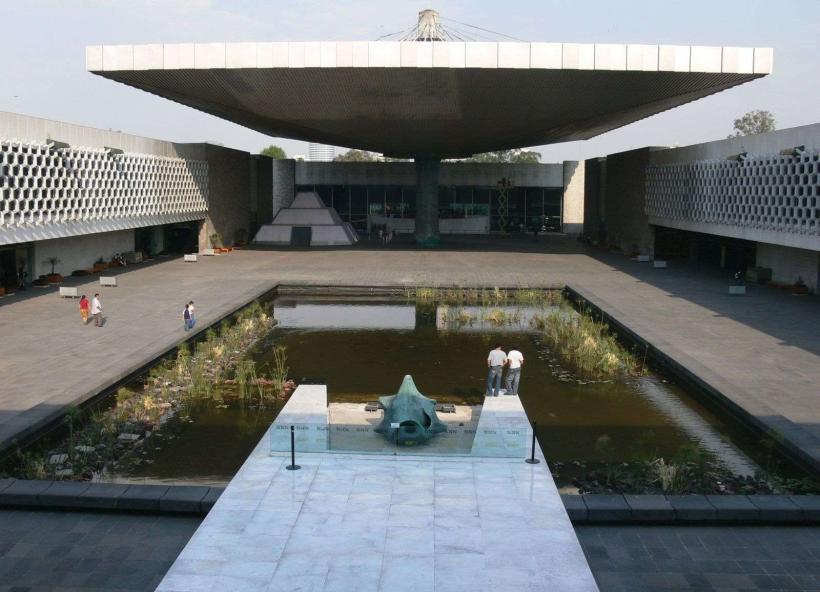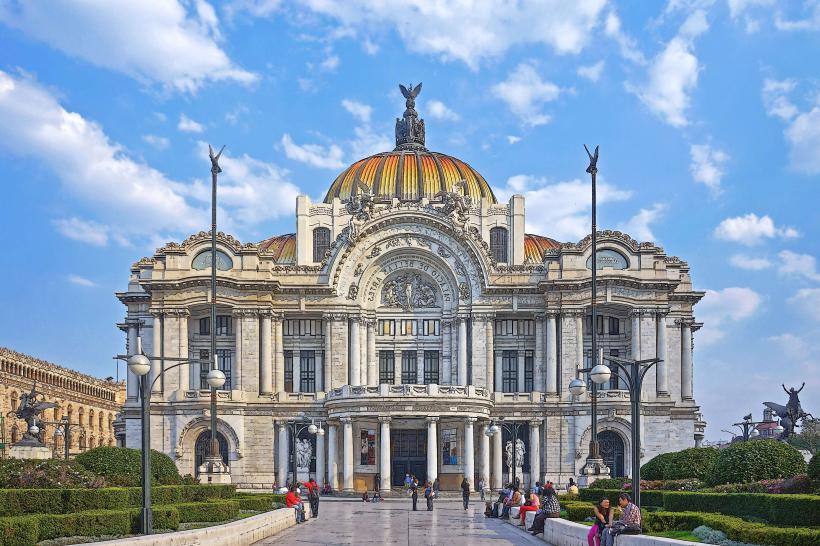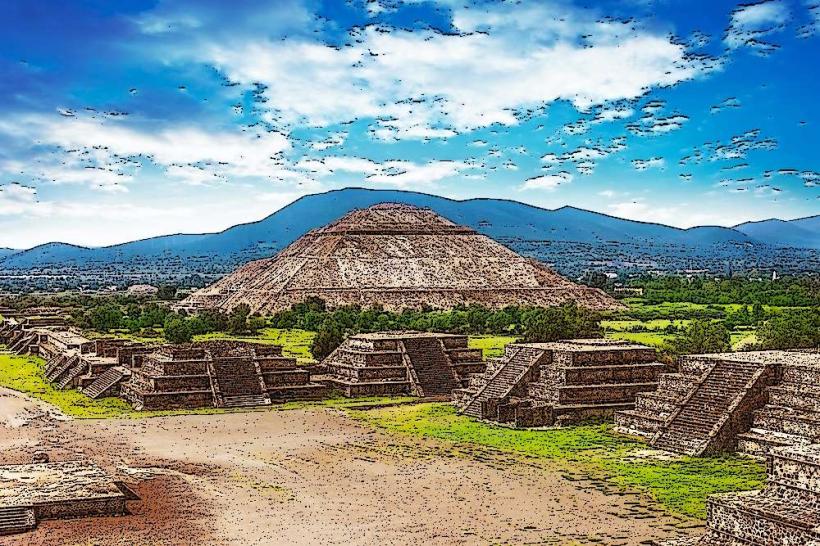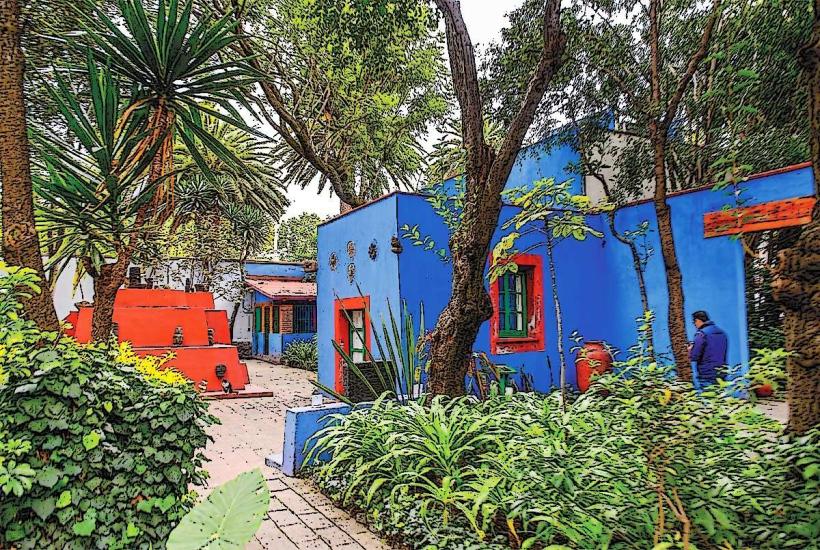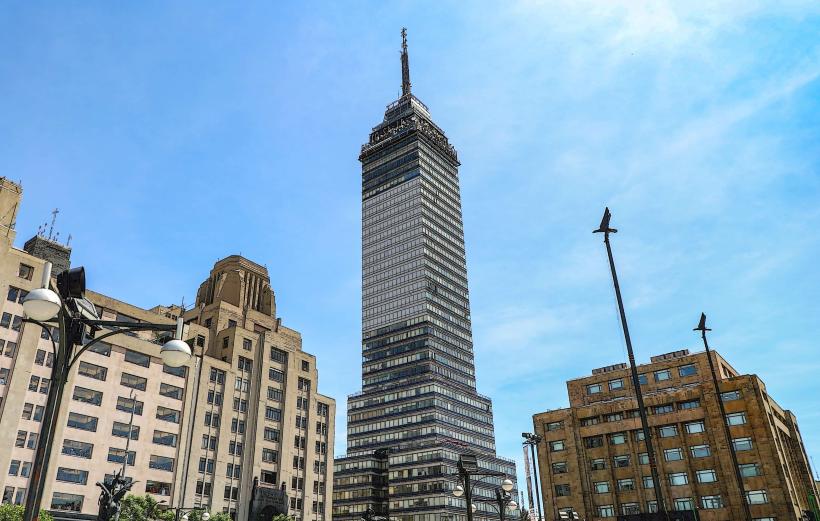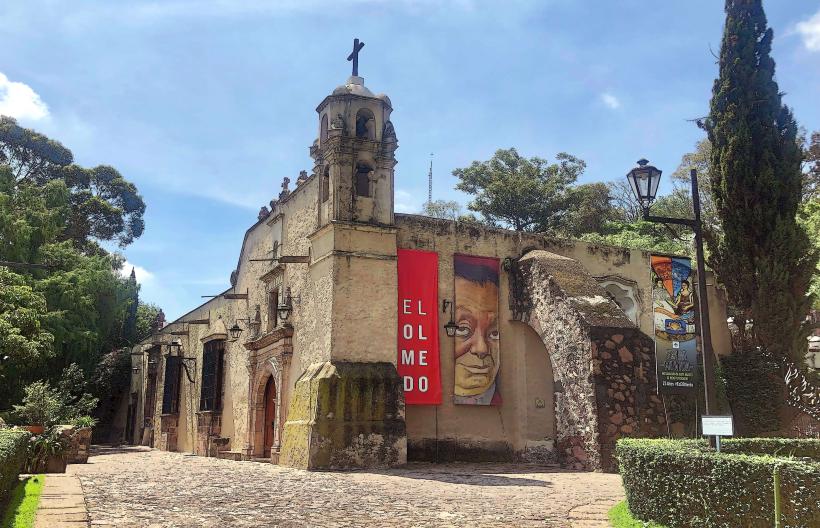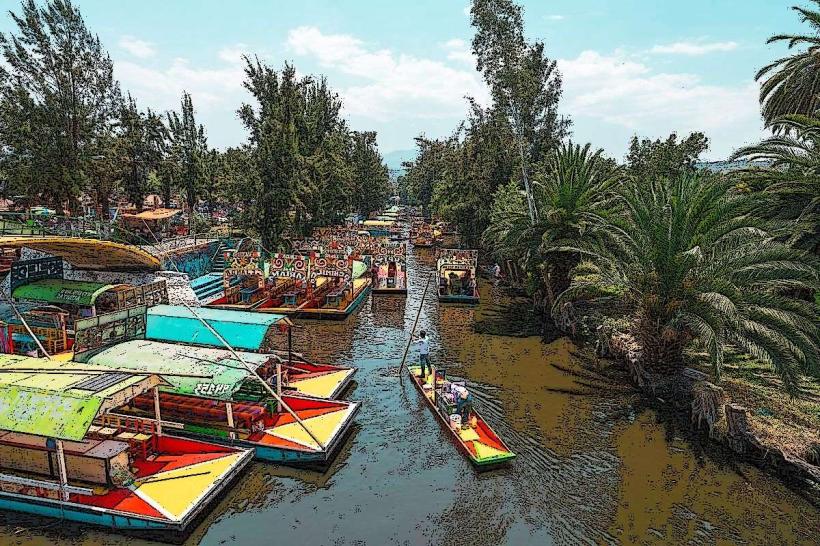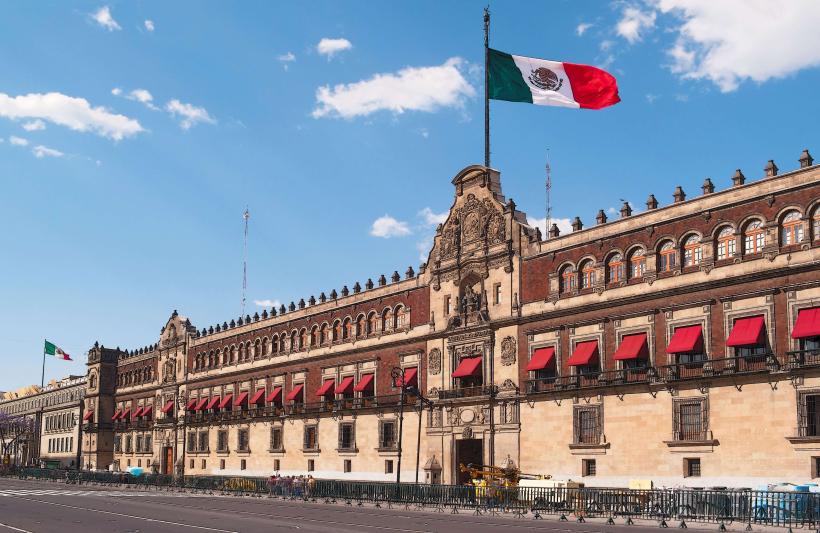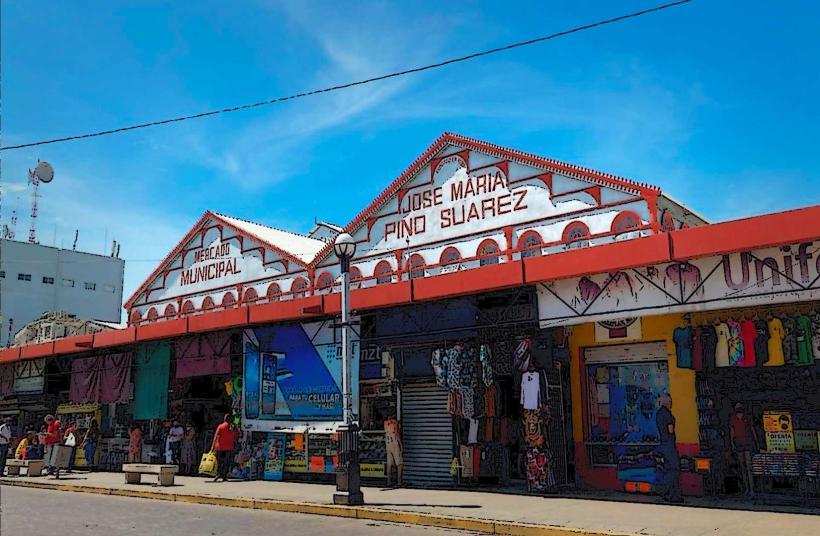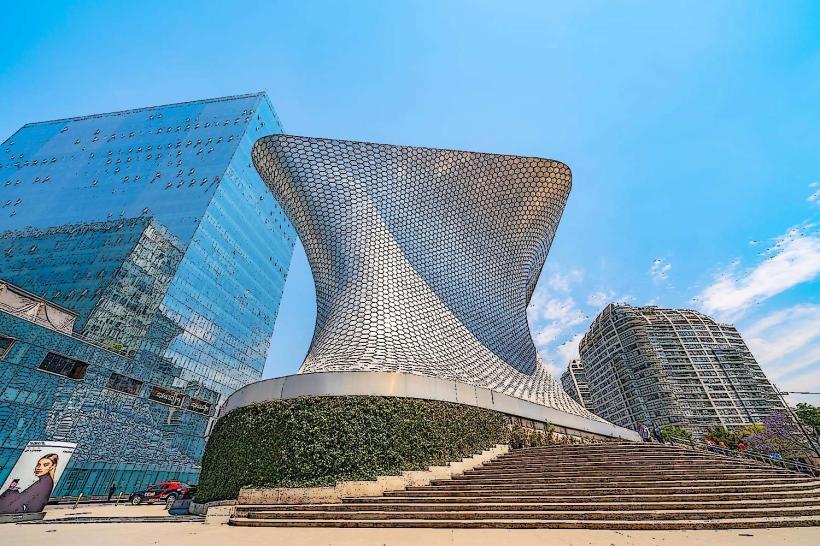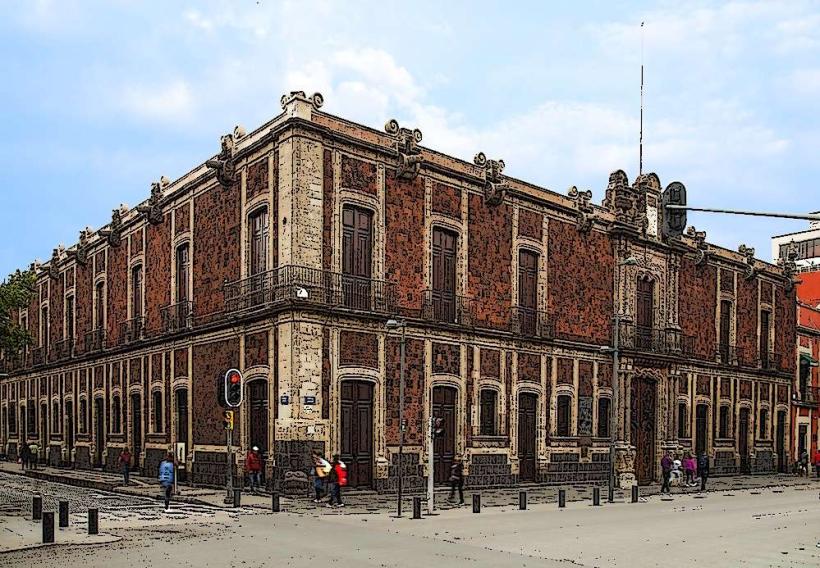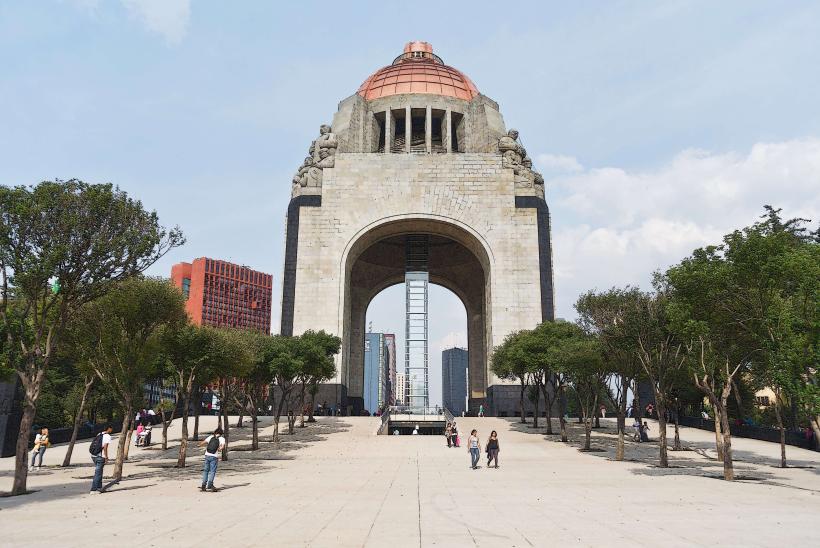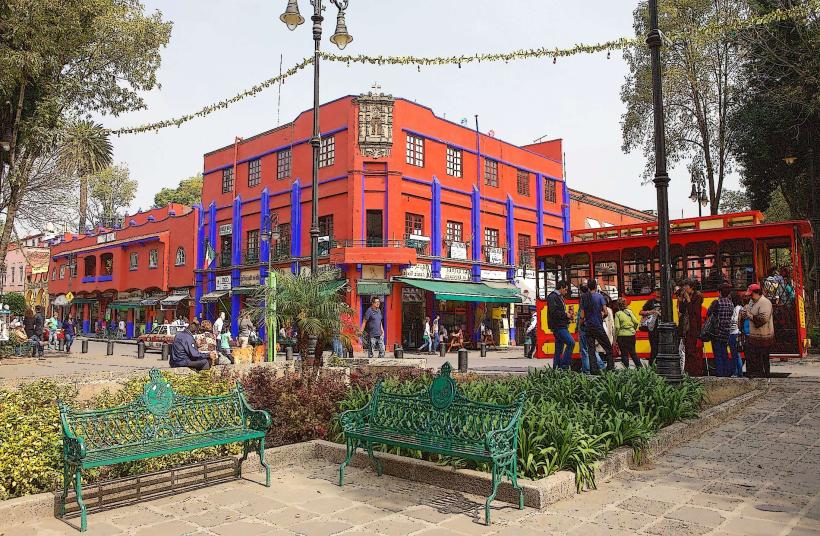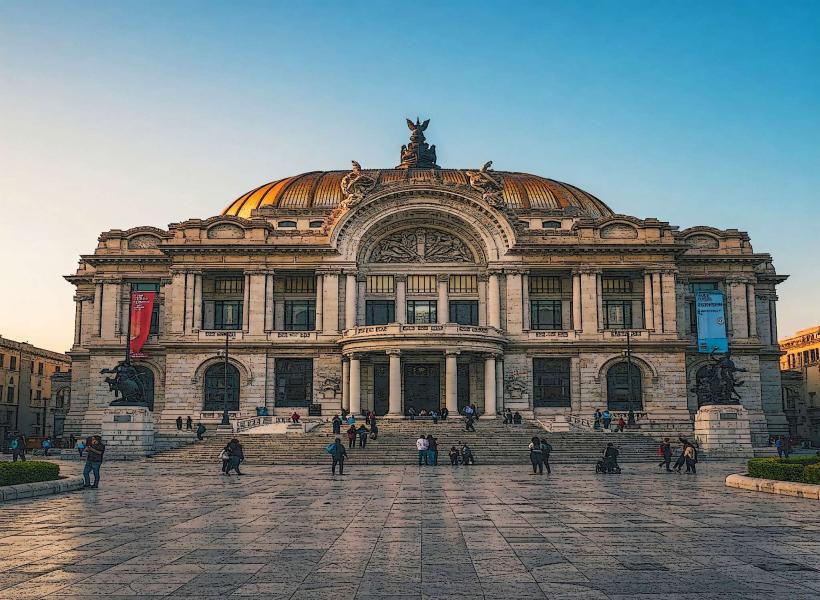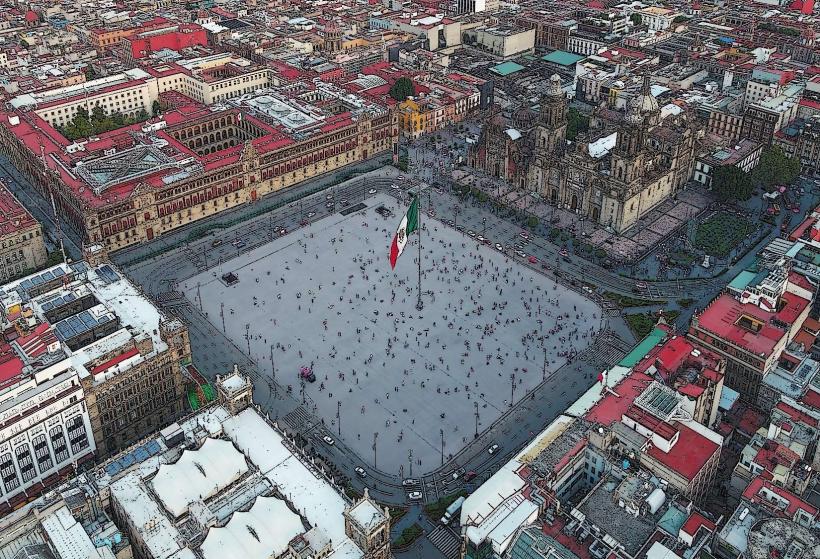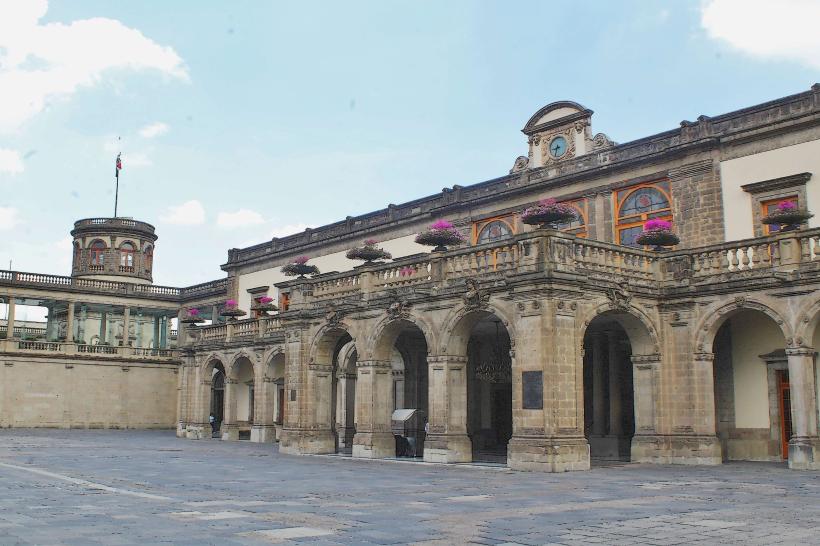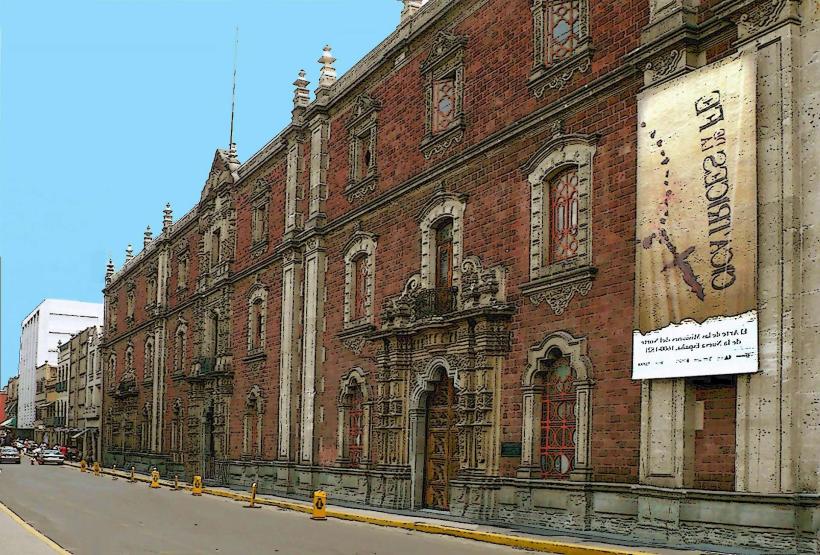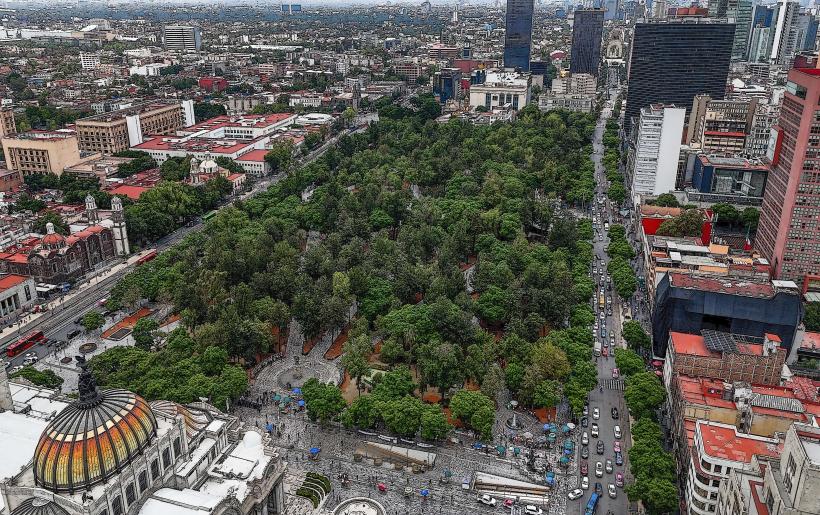Informationen
Wahrzeichen: Templo MayorStadt: Mexico City
Land: Mexico
Kontinent: North America
Templo Mayor, Mexico City, Mexico, North America
The Templo Mayor (Great Temple) is one of the most significant archaeological sites in Mexico City and a major symbol of the Aztec civilization. Located in the Zócalo (the central square) of the city, the Templo Mayor was the main temple of the Aztec capital of Tenochtitlán and one of the most important religious centers of the Aztec Empire. Today, the Templo Mayor is part of the Templo Mayor Museum (Museo del Templo Mayor), which showcases the history, archaeology, and cultural heritage of this monumental site.
Historical Background:
Aztec Origins:
The Templo Mayor was dedicated to two important Aztec deities: Huitzilopochtli, the god of war and the sun, and Tlaloc, the god of rain and fertility. It served as the spiritual and ceremonial heart of Tenochtitlán, which was founded in 1325 on the site of what is now Mexico City.
The temple was a key element of Aztec cosmology, serving as a place for rituals and sacrifices to honor the gods, ensure good harvests, and ensure the balance of the universe. Human sacrifice was a significant aspect of these rituals, often carried out at the top of the temple.
Construction and Expansion:
The Templo Mayor was not a single, static structure, but a complex of buildings that evolved over the centuries. It was rebuilt and expanded multiple times as the Aztec empire grew in power and influence.
The base of the temple was initially built in 1375, and the structure was expanded throughout the reigns of various emperors, most notably Montezuma II (reigning from 1502 to 1520). The final version of the Templo Mayor was a massive two-story pyramid with twin temples at the top, dedicated to Huitzilopochtli and Tlaloc.
The temple was strategically placed on the Sacred Precinct (also called the Tenochtitlán ceremonial center), which was the heart of the city and served as the location for many religious and political events.
Spanish Conquest and Destruction:
When Hernán Cortés and his Spanish forces arrived in 1519, Tenochtitlán was at its peak, with the Templo Mayor being one of the largest and most awe-inspiring temples in the Americas.
After the conquest of the Aztecs in 1521, the Spanish destroyed much of Tenochtitlán, including the Templo Mayor. The Spanish viewed the temple and the Aztec religious practices, particularly human sacrifice, as pagan and barbaric. The ruins of the Templo Mayor were buried beneath layers of rubble and Spanish colonial buildings, effectively erasing much of the site from the cityscape.
Rediscovery:
In the late 18th century, some of the ruins of the Templo Mayor were uncovered during the construction of the Mexico City Cathedral. However, it wasn’t until the 20th century that the ruins were extensively excavated, beginning in 1978, when workers accidentally discovered a massive stone disk of the Aztec Sun Stone (also known as the Calendar Stone) near the site. This discovery led to a more systematic excavation and the eventual creation of the Templo Mayor Museum to display the site’s artifacts and findings.
Key Features of the Templo Mayor:
Structure of the Templo Mayor:
The final structure of the Templo Mayor was a massive pyramid with two distinct levels. The lower level contained four temples, and the upper level featured two main shrines, one dedicated to Huitzilopochtli and the other to Tlaloc.
The temple was approached by a large, wide staircase, and the upper platforms were used for important religious ceremonies, including human sacrifices. The ceremonial platform at the top was where priests would perform these rituals, offering sacrifices to the gods to ensure the continued favor of the divine and the prosperity of the people.
The structure was adorned with vibrant sculptures, reliefs, and paintings, some of which have been preserved in the museum.
Sacred Offerings and Artifacts:
The Templo Mayor was filled with valuable ritual objects, including statues, sacred idols, ceremonial knives, and offerings to the gods. Many of these items were used in the sacrificial rituals that took place at the temple.
The Tlaloc stone, a large, intricately carved stone representing the rain god Tlaloc, and Huitzilopochtli’s statue were placed at the top of the temple and were key to the worship of the two gods.
The Main Pilgrimage Site:
The Templo Mayor also served as a major pilgrimage site for the Aztec people. Pilgrims from across the empire would visit the temple to bring offerings and participate in religious ceremonies. The temple’s location at the center of Tenochtitlán symbolized its importance as the religious heart of the empire.
Monumental Art:
The Templo Mayor was surrounded by impressive monuments and sculptures, many of which have been recovered from the site. Some of the most famous artifacts discovered include the Sun Stone (Aztec Calendar Stone), a giant stone monolith featuring intricate carvings that represent the Aztec view of the cosmos.
Templo Mayor Museum (Museo del Templo Mayor):
Museum Übersicht:
Das Templo -Bürgermeistermuseum ist der Erhaltung und Präsentation der Geschichte und der archäologischen Befunde der Templo -Bürgermeisterstelle gewidmet. The museum features artifacts, statues, ceramics, ritual objects, and reconstructed models of the temple and the city of Tenochtitlán.
The museum offers a deeper insight into the religious and cultural significance of the Templo Mayor and presents visitors with the chance Um das tägliche Leben und die Praktiken der aztec Zivilisation zu untersuchen. Einige der bemerkenswertesten Exponate umfassen:
rekonstruierte Wandgemälde und
The museum is also part of the archaeological complex that surrounds the Templo Mayor. Besucher können die ausgegrabenen Ruinen untersuchen, darunter Tempelplattformen , Opferaltäre , die die Größe des tempfangen Bürgermeisters vor seiner Zerstörung durch die Spanisch hervorheben. Tempel. Archäologie . Templo Mayor befindet sich im zócalo oder des Hauptplatzes von Mexiko -Stadt , was es für Besucher leicht zugänglich macht. Das Museum und die Ruinen befinden sich im Herzen des historischen Zentrums der Stadt, in der Nähe anderer wichtiger Sehenswürdigkeiten wie der Metropolen der Metropolen in Mexiko -Stadt und der palacio nacional . PM. Es ist an montags geschlossen. digital reconstructions that bring the Aztec world to life. Besucher können die Ruinen und Artefakte in ihrem eigenen Tempo erforschen, und Führungen bieten ein tieferes Verständnis der Bedeutung des Ortes. Die Website und das Museum bieten eine faszinierende Reise durch die vorhispanische Vergangenheit Mexikos mit seiner Architektur , art und Rituale Licht auf das spirituelle und soziale Leben der Azteken. Unabhängig davon



